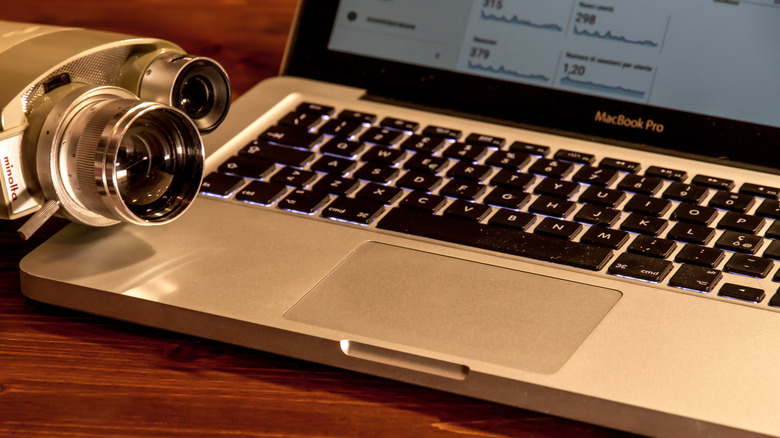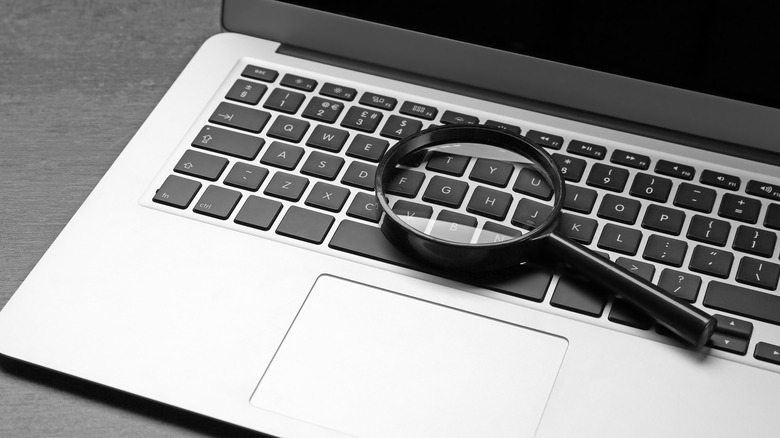How To Tell If Spyware Is Hiding On Your MacBook
Like it or not, Macs and macOS are just as susceptible to spyware as most other devices and operating systems. One shady download; an addicental click; not paying attention when opening an email attachment; all it takes is a second or two and you could find yourself with hidden software burrowing into your system, keeping track of your activity or taking note of the various names and passwords you use to log in. Although you may not actually "find" the spyware at all once it's in place, as these programs have a knack for hiding.
These things aren't impossible to locate, thankfully. Tricky, especially if you don't know they're there, but if you know what to look for and where to look you should be able to deal with most of your unwanted digital passengers. So remember to stay vigilant whenever you receive an odd email or message from someone, and pay close attention to unfamiliar links.
How can I find spyware on my MacBook?
There are a few indicators to look out for when it comes to spyware. Does your MacBook seem to be running slower than you're used to? Are you finding files or browser extensions you don't remember installing? Did your web browser unexpectedly set a new homepage for itself? Is your MacBook giving you security warnings even when you aren't scanning for anything? Any of these occurrences, or just about anything else that seems strange for your particular MacBook, could be a sign of spyware infection.
You can manually check for yourself in a few different ways. Try opening Activity Monitor (under Applications > Utilities) and looking for any suspicious processes, or use the search function to check for specific types of spyware if you know the process name.
Another option is to set up a firewall, which can be used to monitor your network activity and block anything out of the ordinary. You can turn on firewall protection through the Security & Privacy menu in your System Preferences. Once turned on you can also adjust settings to automatically allow specific apps or services to get through, or put your MacBook into "stealth mode" to make it more difficult for nefarious people and software to find it in the first place.
What do I need to do to get rid of spyware on my MacBook?
One of the most effective, but also most extreme, ways to take care of spyware (and most other malicious software) is to reformat your MacBook completely. Restart your MacBook and immediately hold Command + R to boot up in Recovery Mode. From there, select Disk Utility and erase the hard drive. While this will almost certainly clear out any spyware that's settled in, it will also get rid of all the other files and apps and settings you've saved. So either make backups before you reformat or be prepared to manually reinstall a lot of software (that you'll want to make sure is safe and legitimate first).
Beyond that, the simplest way to try and get rid of some forms of spyware is to install the latest system updates. These often address security issues and could take care of the problem for you. Or you can attempt to locate spyware through Activity Monitor, as previously mentioned, and manually force it to quit. From there you can also search for the spyware on your system (the name will likely match the name of the function seen in Activity Monitor), and drop it into the Trash once found.


